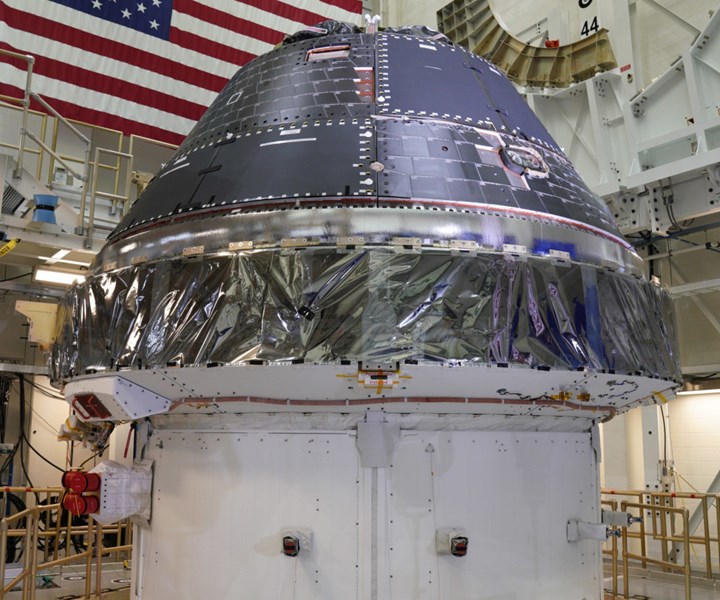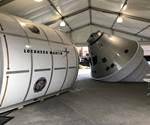Lockheed Martin completes Orion spacecraft capsule
The crew module capsule has been assembled onto the Orion service module for further testing before the Artemis 1 uncrewed mission to the moon.

Source | Lockheed Martin
Lockheed Martin (Fort Worth, Texas, U.S.) has completed building the capsule for NASA's Orion spacecraft. The crew module capsule for the uncrewed Artemis 1 mission to the moon has been stacked on top of the Orion service module, which was also recently finished.
Technicians and engineers from Lockheed Martin, NASA and supporting contractors assembled the capsule into its finished state after its arrival in Florida. The work included installing the capsule's avionic computers, harnesses, propulsion system and its 12 engines, 11 parachutes, its 16-foot-diameter heat shield (see “Heatshield for Extreme Entry Environment Technology (HEEET): A broader mission”), forward bay cover and numerous other systems and components.
According to Mike Hawes, Orion program manager for Lockheed Martin, the systems have been thoroughly tested and validated by the team throughout assembly. The capsule will be tested in action during a three-week, uncrewed Artemis 1 flight test around the moon and back, in preparation for a crewed Artemis 2 mission in 2022.
“Orion is a new class of spaceship, uniquely designed for long-duration deep space flight,” says Lisa Callahan, vice president and general manager of Commercial Civil Space at Lockheed Martin.
The crew module and service module were stacked together in the Final Assembly and System Testing (FAST) cell where they are now being fully integrated, including connecting the physical retention bolts and the umbilical lines between the two modules. The FAST cell is also where the Apollo spacecraft were integrated.
The combined stack will then be powered up and undergo a series of integrated systems tests. In September, the combined stack will be shipped to NASA's Plum Brook Station in Ohio, where it will go through environmental testing in a large thermal vacuum chamber as well as testing for electromagnetic interference and compatibility.
Once Orion returns to Kennedy at the end of the year, the spacecraft will go through final preparations before Lockheed Martin delivers it to ground systems for launch processing in early 2020.
The Orion spacecraft was announced at an event on July 20 to commemorate the 50-year anniversary of the Apollo 11 moon landing.
Related Content
-
Ceramic matrix composites: Faster, cheaper, higher temperature
New players proliferate, increasing CMC materials and manufacturing capacity, novel processes and automation to meet demand for higher part volumes and performance.
-
Plant tour: Aernnova Composites, Toledo and Illescas, Spain
RTM and ATL/AFP high-rate production sites feature this composites and engineering leader’s continued push for excellence and innovation for future airframes.
-
Industrializing additive manufacturing in the defense/aerospace sector
GA-ASI demonstrates a path forward for the use of additive technologies for composite tooling, flight-qualified parts.

.jpg;width=70;height=70;mode=crop)














